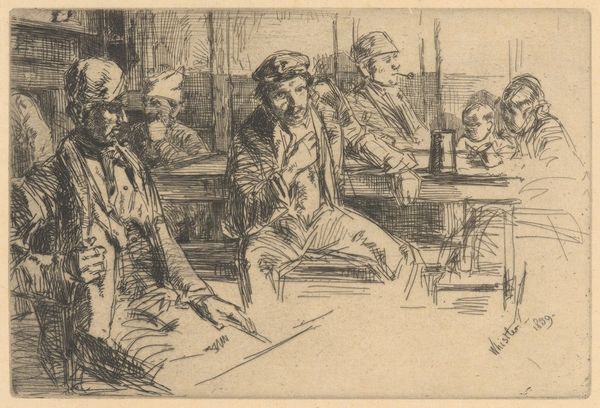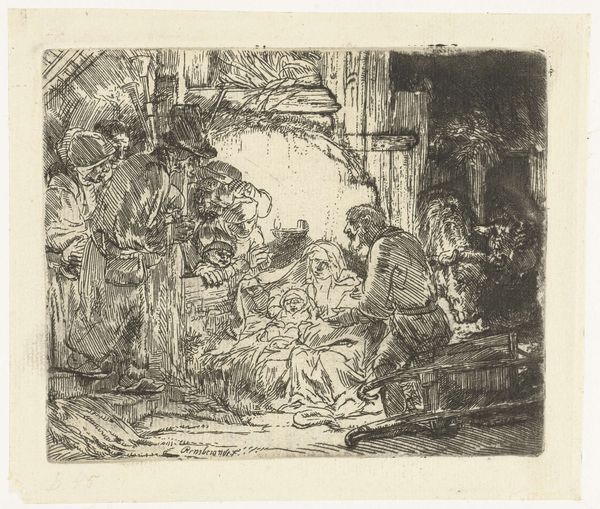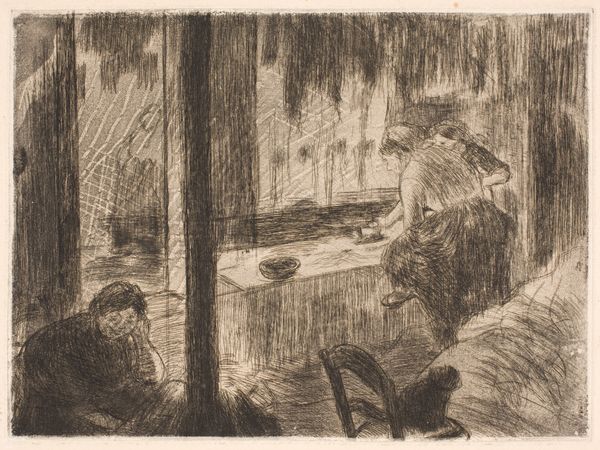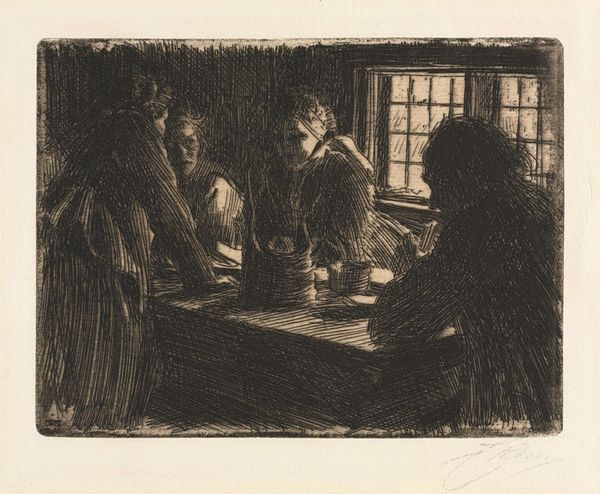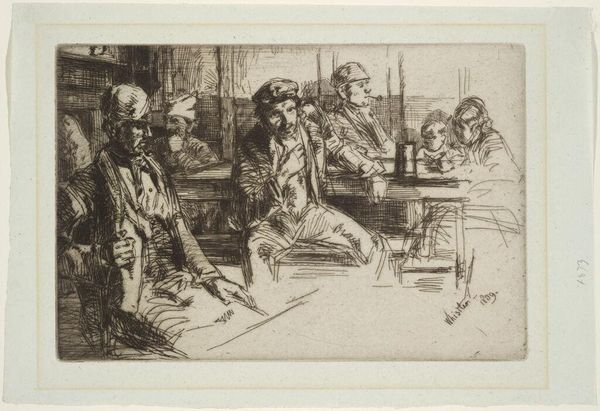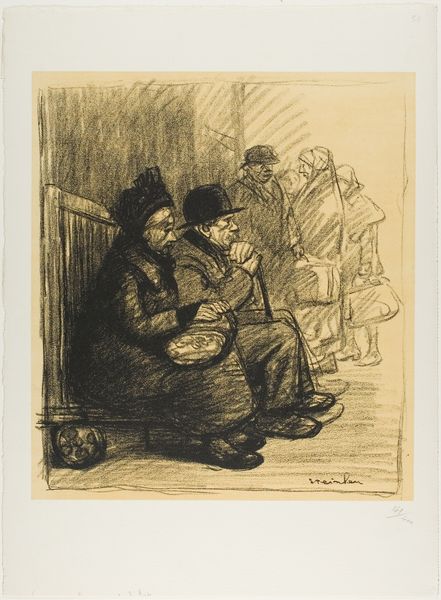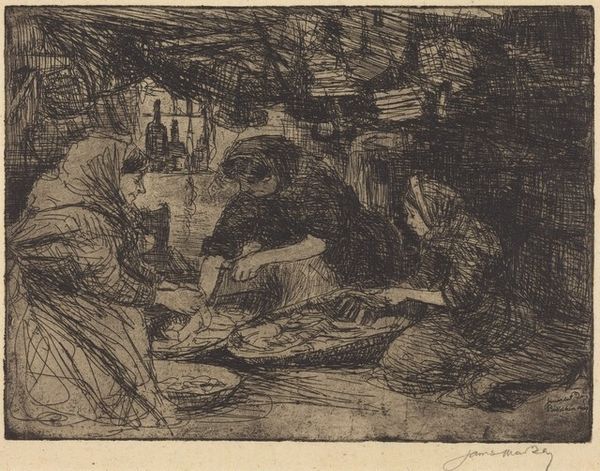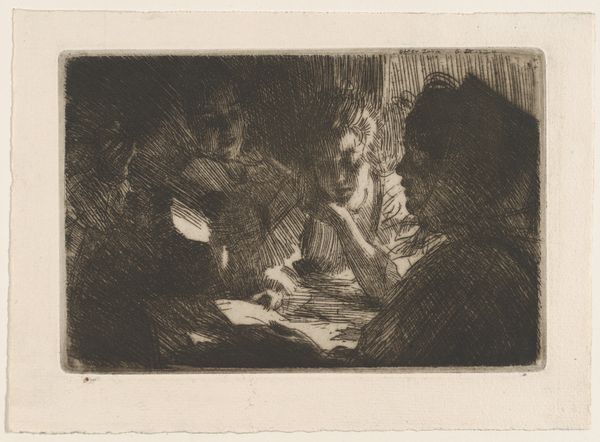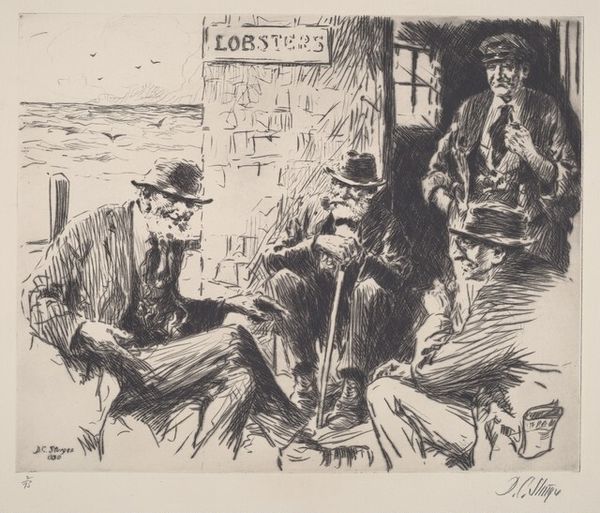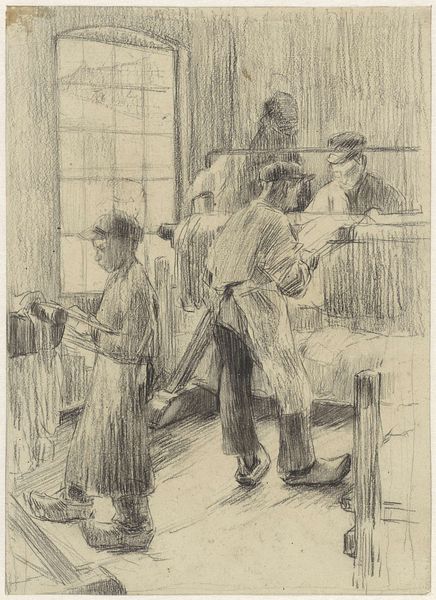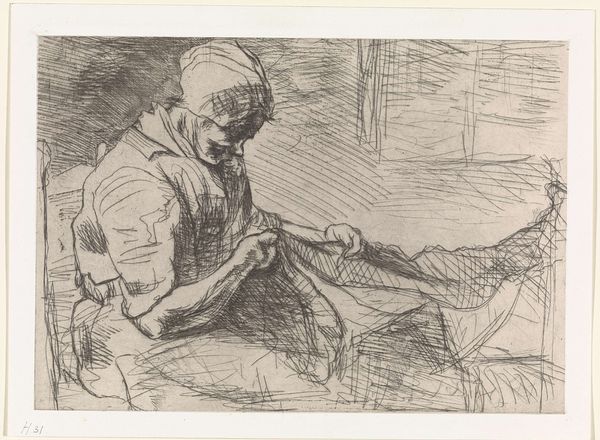
drawing, print, graphite
#
portrait
#
drawing
# print
#
pencil sketch
#
figuration
#
pencil drawing
#
graphite
#
cityscape
#
genre-painting
Dimensions: Image: 201 x 250 mm Sheet: 272 x 319 mm
Copyright: National Gallery of Art: CC0 1.0
Editor: This is Martin Petersen’s "In the El" from 1943. It looks like it's a graphite print depicting passengers on an elevated train. The style is so detailed, almost like a snapshot of everyday life, but there’s a sense of isolation despite everyone being in the same space. What strikes you when you look at this piece? Curator: I am immediately drawn to its commentary on the public and private sphere, particularly within the context of 1940s urban life. The "El," or elevated train, serves as a microcosm of society. The architecture literally elevates, as well as separates, it from the pedestrian streetscape. The individuals are physically close, yet engaged in separate, insular activities like reading. This creates a paradox of being together, but alone. How do you see that tension playing out? Editor: I see it in how each person seems lost in their own world. The man with the newspaper is shielded, and the woman stares straight ahead. They’re connected by the train, but utterly disconnected from each other. Was this isolation a common theme in art from this period? Curator: Absolutely. The rise of industrialization and urbanization brought about significant social changes, leading to both connection and alienation. Artists of the time, especially those working in urban centers, often explored these themes. They also often addressed themes around gendered societal expectation and norms. Does that come up in your observation of the visual characteristics and subject matter here? Editor: Yes, I see how the woman’s formal attire and posture could be interpreted in that way. It feels very studied. I hadn't considered the industrialization aspect so directly. This helps me view the art from a new point of view. Thank you. Curator: Of course! Considering those broader historical and social forces really enriches how we can read an artwork and its place in culture.
Comments
No comments
Be the first to comment and join the conversation on the ultimate creative platform.

